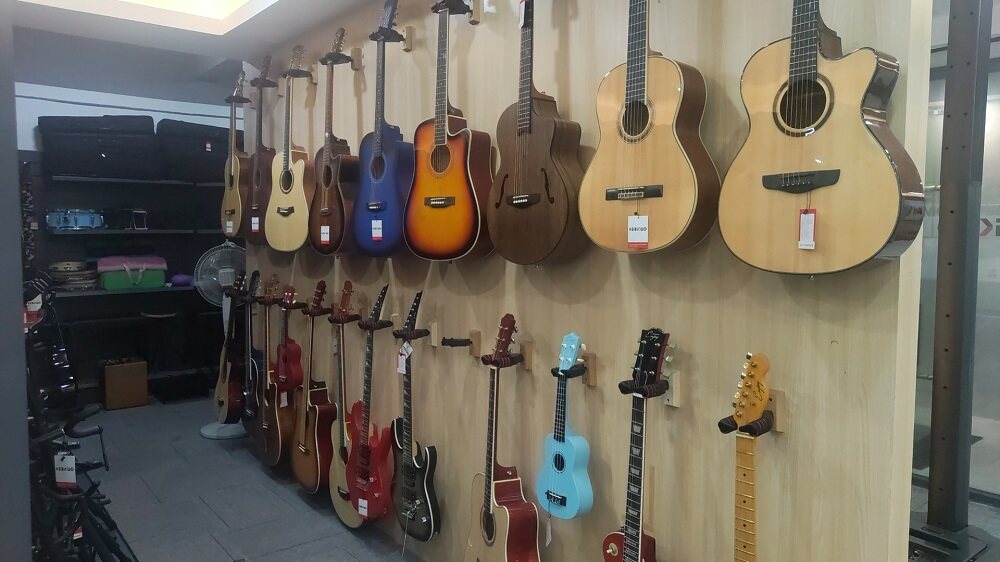Currency


The guitar is one of the most popular and versatile instruments in the world, with a rich history that spans thousands of years and various cultures. From its early origins to the diverse range of guitars available today, the instrument has undergone significant evolution, shaping its place in music history.
Ancient Origins: The Early Stringed Instruments
The origins of the guitar can be traced back to ancient civilizations. The earliest stringed instruments were found in Mesopotamia and Egypt, dating back over 3,000 years. These instruments, like the tanbur and the oud, featured a long neck, a resonating body, and strings, similar to what would eventually become the guitar. The oud, in particular, influenced the development of the lute in Europe during the Middle Ages.
The Renaissance and the Evolution of the Lute
During the Renaissance (14th to 17th centuries), the lute became the most prominent stringed instrument in Europe. It had a rounded back, frets, and multiple strings, and was used in both secular and sacred music. The lute's complex construction and tuning system laid the groundwork for the modern guitar's design and playing techniques.
The Birth of the Classical Guitar
The guitar as we know it began to take shape in the 16th century in Spain. The early Spanish guitar, or "vihuela," was a six-course instrument with gut strings, and it closely resembled the modern classical guitar in size and shape. By the 18th century, the baroque guitar, with five courses, became popular in Europe. This instrument eventually evolved into the six-string classical guitar in the early 19th century, thanks to luthiers like Antonio de Torres, who standardized its design and construction.
The Rise of the Acoustic Guitar
The acoustic guitar, often associated with folk, country, and blues music, emerged in the 19th century. Its steel strings, compared to the nylon or gut strings of classical guitars, produced a louder and brighter sound. Martin & Co., a prominent American guitar manufacturer, introduced the X-bracing system, which allowed for greater sound projection and durability. This design is still used in most acoustic guitars today.
The Birth of the Electric Guitar
The invention of the electric guitar in the 1930s revolutionized music. Musicians like Les Paul and companies like Fender and Gibson pioneered this innovation, adding pickups and amplifiers to traditional guitars to produce an entirely new sound. The Fender Telecaster, introduced in 1951, was the first mass-produced solid-body electric guitar, followed by the iconic Fender Stratocaster and the Gibson Les Paul. The electric guitar became the centerpiece of rock 'n' roll, blues, and jazz music, transforming the musical landscape of the 20th century.
Variations and Modern Guitars
Today, there are many types of guitars, each with unique characteristics suited to different musical styles:
Classical Guitar: Typically nylon-stringed with a wide neck, used in classical, flamenco, and folk music.
Acoustic Guitar: Steel-stringed with a narrower neck, ideal for folk, country, and pop.
Electric Guitar: Solid or semi-hollow body with magnetic pickups, used in rock, blues, jazz, and metal.
Bass Guitar: A lower-pitched instrument with four, five, or six strings, foundational in rhythm sections.
12-String Guitar: Features double strings for each note, producing a richer, fuller sound.
Archtop Guitar: Often used in jazz, featuring a curved top and f-holes, similar to a violin.
The Future of the Guitar
The guitar continues to evolve with technological advancements and musical trends. Innovations like digital modeling, MIDI capabilities, and extended-range guitars (such as 7- and 8-string models) are expanding the instrument's possibilities. Despite these changes, the guitar remains a beloved instrument across genres and cultures, retaining its role as a powerful medium of expression.
From its ancient roots to its modern forms, the guitar has evolved through centuries of innovation and cultural exchange. Whether played acoustically or amplified, the guitar remains a central instrument in global music, cherished for its versatility, expressiveness, and timeless appeal.
Email cannot be empty
Password cannot be empty
Email format error
Email cannot be empty
Email already exists
6-20 characters(letters plus numbers only)
The password is inconsistent
Email format error
Email cannot be empty
Email does not exist
6-20 characters(letters plus numbers only)
The password is inconsistent